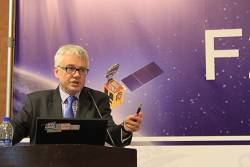How Important Is It to Synchronize the Code and Phase Measurements of a GNSS Receiver?

Q: How Important Is It to Synchronize the Code and Phase Measurements of a GNSS Receiver?
A: Precise timing lies at the heart of GNSS implementation and operation and is generally well understood in terms of synchronizing individual satellites and/or receivers. Recent results, however, have demonstrated that timing of code and phase measurements in a receiver can have significant implications for the timing community in particular.
By Inside GNSS


























